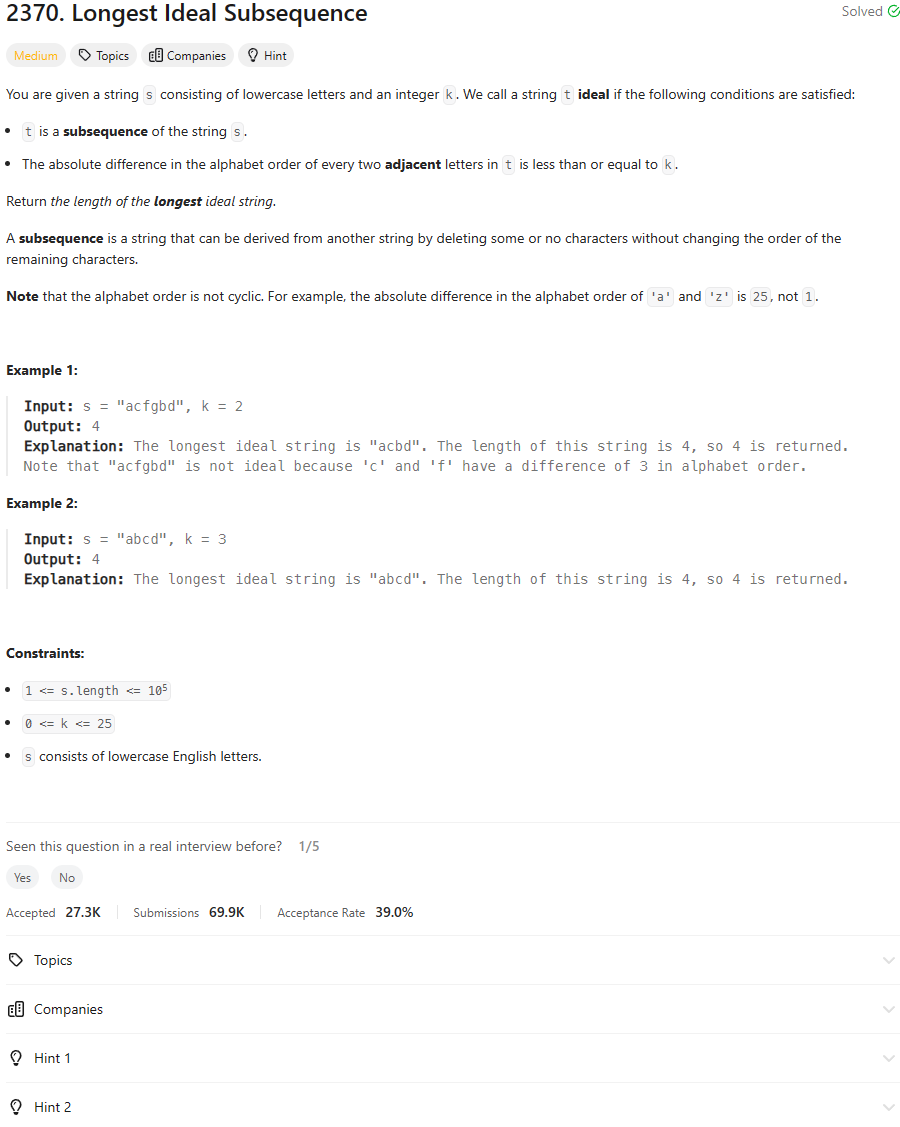Problem Statement

Memoization approach - Memory Limit Exceeded
class Solution:
def longestIdealString(self, s: str, k: int) -> int:
res = float('-inf')
@cache
def dfs(i, curr, length):
if i >= len(s):
return length
take = skip = 0
if abs(ord(s[i]) - ord(curr)) <= k:
take = dfs(i + 1, s[i], length + 1)
skip = dfs(i + 1, curr, length)
return max(take, skip)
for i in range(len(s)):
res = max(res, dfs(i + 1, s[i], 1))
return res if res != float('-inf') else 1
Editorial Solution
Top down - memoization approach
class Solution:
def longestIdealString(self, s: str, k: int) -> int:
N = len(s)
# Initialize all dp values to -1 to indicate non-visited states
dp = [[-1] * 26 for _ in range(N)]
def dfs(i: int, c: int, dp: list, s: str, k: int) -> int:
# Memoized value
if dp[i][c] != -1:
return dp[i][c]
# State is not visited yet
dp[i][c] = 0
match = c == (ord(s[i]) - ord('a'))
if match:
dp[i][c] = 1
# Non base case handling
if i > 0:
dp[i][c] = dfs(i - 1, c, dp, s, k)
if match:
for p in range(26):
if abs(c - p) <= k:
dp[i][c] = max(dp[i][c], dfs(i - 1, p, dp, s, k) + 1)
return dp[i][c]
# Find the maximum dp[N-1][c] and return the result
res = 0
for c in range(26):
res = max(res, dfs(N - 1, c, dp, s, k))
return res
Bottom up - dynamic programming
class Solution:
def longestIdealString(self, s: str, k: int) -> int:
N = len(s)
dp = [0] * 26
res = 0
# Updating dp with the i-th character
for i in range(N):
curr = ord(s[i]) - ord('a')
best = 0
for prev in range(26):
if abs(prev - curr) <= k:
best = max(best, dp[prev])
# Append s[i] to the previous longest ideal subsequence
dp[curr] = max(dp[curr], best + 1)
res = max(res, dp[curr])
return res
